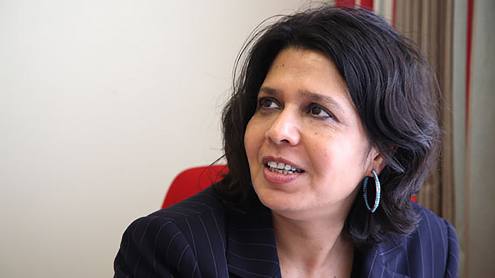At this year’s Sibos, I chaired a key discussion that asked whether the business model of banking was being fundamentally disrupted or just challenged by digitisation and technology. The business modelling tool we used is based on a number of components of how a business is organised, those components being:
Editor's choice
- The value propositions: the services and products provided.
- The channels: the method of delivering those services and products.
- Customer segmentation: the targets for the services and products.
- Customer relationship management: who provides the service and how.
Time for a revolution?
These four factors are underpinned by the revenue model of the bank, the fifth and most fundamental foundation of the model. There are then three factors that comprise this other foundation:
- The resources required to create the products and services: capital, labour and so on.
- The activities required to create the products and services: workflows and processes.
- The partnerships required to deliver those products and services.
That was quite a complicated idea to get across in a short session, but we managed to do it through a great selection of panellists. First, we looked at the customer relationship and proposed that banks had lost touch with customers as customer relationships became digitised, and that the remote, digital customer is very different from the customer of the past. At the end, we asked the audience if the customer relationship was being revolutionised by digitisation or whether this was just an evolution of the banks’ outreach. About two-thirds agreed with the former.
We then discussed the core value proposition – moving money – and the new disruptions being generated by virtual currencies such as Bitcoin. Most of the audience were aware of Bitcoin and that it is digital value exchange, rather than a pure virtual currency. We put forward the idea that banks should possibly offer stored value for Bitcoins, in the same way that they store gold, commodities and other tradeable securities.
This is the view of the German government, which has just legislated that Bitcoin is seen as a tradeable store of value, and may illuminate the future of how we exchange many capabilities, both commercial and community based. However, the Bitcoin community is small right now – valued at about $1bn – which is about how much the Swift money transfer system moves in a second.
The vote here said that digital currencies are purely an evolution of money transfer, as banks have known for decades that stores of value can be exchanged as bits, and bytes, of value.
Breaking the backbone
Are the back-end infrastructures being disrupted by change? The discussion at Sibos suggested that they are.
As we build big infrastructures they become harder to change because the larger the backbone, the more complex it is to adapt. Hence, many new players are targeting infrastructure from technology giants such as Amazon and Google, as well as niche players such as Earthport and the Currency Cloud. These firms recognise that if you have a complex backbone you cannot break it, but you can place steel pins to work around the core infrastructure, and that is what the new nimble players are doing. The backbone can often form the core of why we offer customers the services that we do, and in the way and format that we do. We may not want to offer corporates cash management, but we have to because of the backbone.
So, how to organise the bank for the future model of operation? It was suggested that the old organisation, built in a pyramid shape around the division of labour, has done just that – divided the organisation so it cannot adapt. If businesses are to keep up, they need to be fast moving and that implies lots of small teams all working to a common purpose – as Google does – rather than a large hierarchy where every small change has to be sent to the boss for authorisation.
We finished the session by asking everyone whether we really need a revolution of the bank business model, or whether we could simply adapt to survive. Although the audience voted 60:40 in favour of revolution, I personally expect the industry to evolve and keep up because we have a model protected by compliance, audit and regulation, to ensure our capital controls are held high enough to be stable and resilient. Do Bitcoin, Moven and the others challenging the banks have this control and resilience?
Chris Skinner is an independent financial commentator and chairman of London-based The Financial Services Club.






